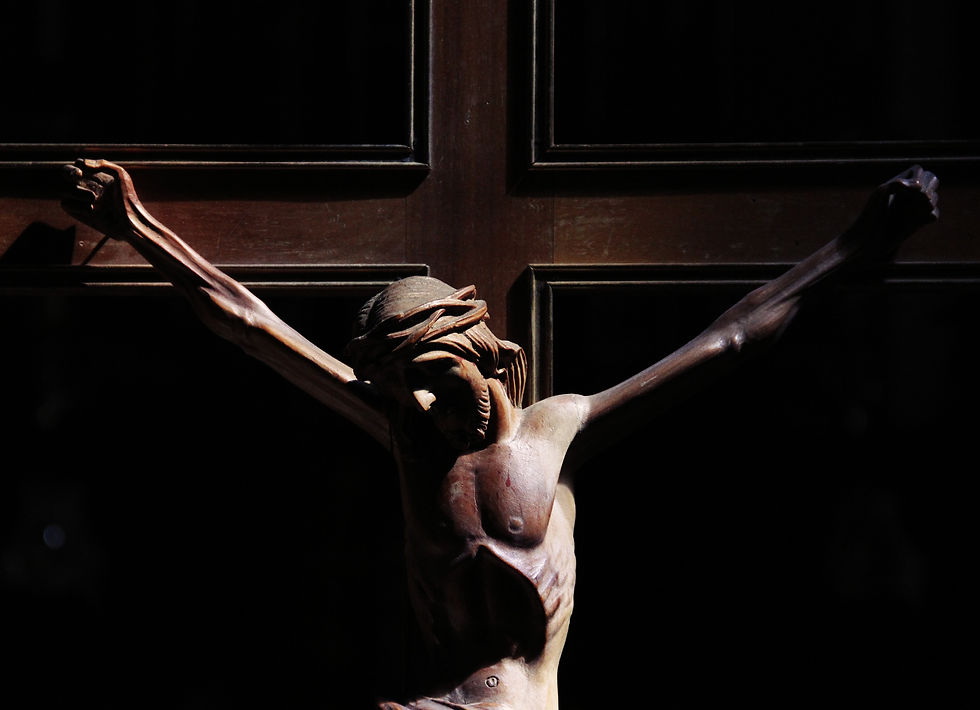“Count it all joy, my brothers, when you suffer various trials, for you know that the testing of your faith produces perseverance. And let perseverance be perfect, so that you may be perfect and complete, lacking in nothing.” (James 1:2-5)
There are many teachings of our faith that, in more or less similar forms, are held by believers of a variety of religions and even many people of no religious faith at all. Take, for example, the teaching, “Do unto others as you would have them do unto you.” I suspect that most people of good will, no matter what their faith background, would hold that as an important principle. But there are some teachings of our Catholic faith that are not like that, either because they are truths that cannot be known by reason and so can only come to us via revelation (e.g. the nature of God as a Trinity), or, because they are drawn from the very life of Jesus Himself. An example of the latter is how we, as Catholics, see suffering.
When I was a student brother, I spent a summer working in a cancer hospice run by the Hawthorne Dominican sisters. My supervisor for that summer was a wonderful sister and besides the physical and spiritual work I was doing with the residents of the hospice, she also provided a bit of an intellectual “program” of readings for me. What she did is take me on a trip through history looking at the various ways different people have tried to address the mystery of suffering. The books assigned ranged from classical (Boethius’ The Consolation of Philosophy) to the very modern (Rabbi Harold Kushner’s 1981 book When Bad Things Happen to Good People). The final work she had me read that summer, however, was the one that changed my outlook on suffering forever: Pope John Paul II’s Apostolic Letter Salvifici Doloris (“On the Christian Meaning of Human Suffering”). To say it was “better” than anything else doesn’t begin to do it justice. It was transformative. It opened up a whole world to me that, up until that point, I only vaguely sensed before. What sets apart our Christian understanding of suffering, when all is said and done, is one basic fact: Jesus Christ, the second Person of the Blessed Trinity, became man and went to the Cross. But more than simply going to the Cross… He conquered. The suffering and death of the Cross was defeated by the power of His Resurrection. The Cross -- and the suffering that went with it -- became the instrument of salvation. As we pray during the Stations of the Cross: “We adore You, O Christ, and bless You; for by Your Cross You have redeemed the world.” The Cross, far from being a symbol of the triumph of suffering and death, instead became a symbol of the victory of Christ OVER suffering and death. The Cross became the symbol of salvation. And all the crosses of our lives, whether big or small, whether temporary or permanently lifealtering, when joined to the power of His Cross become salvific for us as well. These crosses bring victory, not defeat.
Sufferings and trials are an inescapable part of our human existence. I know in my own life, I am not yet at the point of holiness where I can honestly say along with St. James that I find joy in the trials that come my way, or where I can say as St. Paul does “I rejoice in my sufferings…” (Col 1:24). But I have reached the point where I can unite them to His Cross and offer them to Him, for my own salvation and for the salvation of the world.
For anyone experiencing any suffering -- ill health, the death of a loved one, financial struggles, persecution for your Catholic beliefs or moral positions, or anything else -- I urge you to bring those sufferings to the Cross and unite them with His.
And, if you haven’t ever read it, pick up a copy of John Paul II’s letter I mentioned earlier. I suspect reading it might be life-changing for you as well.

God Bless,
Fr. John Paul
Comments